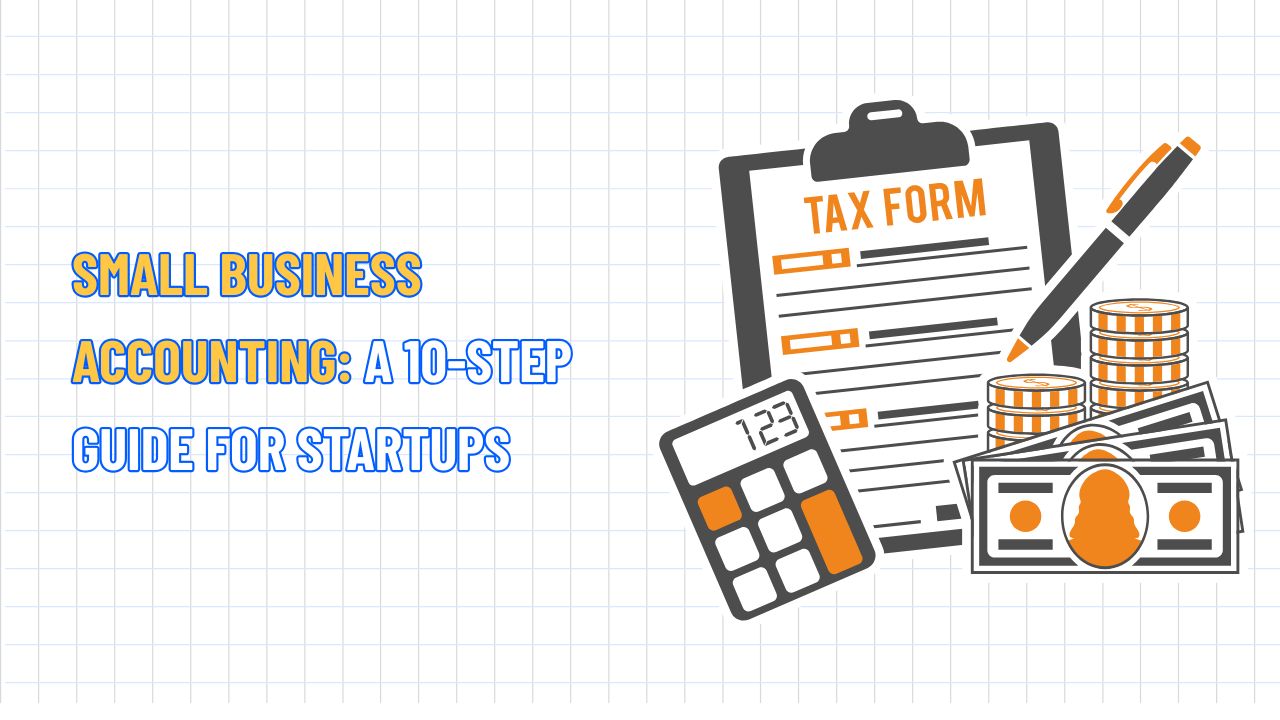Understanding Small Business Taxes: A Comprehensive Guide for US
Table of Contents Hide
Navigating the complex U.S. tax system for small businesses can be a major challenge for new entrepreneurs or those balancing tight budgets. In this article, NextSky will guide you through a comprehensive overview of tax types and strategies for managing small business taxes to run your operations efficiently.

What is small business tax?
Small business taxes encompass various types at the federal, state, and local levels, depending on income and structure. Most operate as pass-through entities like sole proprietorships, partnerships, or LLCs, where profits are taxed at the individual rate rather than the corporate level. In contrast, corporations pay a flat federal tax of 21% plus state taxes. Understanding these rules helps businesses manage finances effectively and avoid tax penalties.
Read more: What is A Small Business? A Comprehensive Guide to Definition
Practical steps to manage small business taxes
To manage small business taxes efficiently, you need a clear plan and the right tools. Here are practical steps to help you as a small business owner:
Step 1: Choose the right accounting period
First, decide if your business will use a calendar year (January 1 to December 31) or a fiscal year, a 12-month cycle ending on the last day of any month except December. Selecting an accounting period that aligns with your operational cycles and peak revenue times simplifies tax reporting and cash flow management.
Step 2: Keep detailed records
Track all income and expense transactions using software like QuickBooks, Xero, or Wave to save time and minimize errors. Remember to retain receipts, invoices, and bank statements for at least three years, as this is the IRS audit statute of limitations. This makes it easier to handle audits and stay proactive when dealing with tax authorities.
Step 3: Estimate quarterly taxes
To avoid unnecessary penalties, proactively estimate and pay income taxes based on the previous year's results or current-year profit projections. Using the IRS Form 1040-ES helps you plan and make quarterly payments on time, ensuring your business maintains transparency and steady cash flow.
Step 4: Work with a professional
A certified accountant or tax advisor can navigate complex regulations and maximize tax savings, especially if your business has employees or operates in multiple states. If you prefer self-filing, software like TurboTax Business or H&R Block can accurately complete the required forms.
Step 5: Plan for deductions and tax credits
Regularly review business expenses like home office costs or travel to identify eligible deductions. Additionally, staying updated on IRS tax credits for areas like health care or research and development allows you to leverage incentives and improve overall financial efficiency.
Read more: Best Small Business Accounting Tools Your Finances with Ease
How business structure affects taxes
Your business structure determines how you file taxes and which forms to use. Below, we break down the most common structures and their tax implications:
1. Sole proprietorship
- Taxes: Income is reported on your personal tax return (Form 1040, Schedule C). You pay individual income taxes at rates from 10% to 37% based on your income bracket, plus self-employment tax (15.3% for Social Security and Medicare).
- Average tax rate: About 13.3% for sole proprietorships, per IRS data. Pros: Easy to set up; no separate business tax return required.
- Cons: You're personally liable for business debts, and self-employment taxes can be a significant burden.
- Best for: Freelancers, consultants, or independent entrepreneurs testing business ideas.
2. Partnership
- Taxes: Partnerships file Form 1065 to report income, but taxes pass through to partners' personal returns (Schedule K-1). Partners pay income and self-employment taxes on their share.
- Average tax rate: About 23.6% for small partnerships.
- Pros: Flexible structure for co-owned businesses; shared liability.
- Cons: General partners have unlimited personal liability unless structured as a limited partnership (LP) or limited liability partnership (LLP).
- Best for: Professional firms like law offices or accounting practices.
3. Limited liability company (LLC)
- Taxes: Single-member LLCs are taxed as sole proprietorships (Schedule C). Multi-member LLCs are taxed as partnerships (Form 1065). You can elect corporate taxation if beneficial.
- Pros: Limited liability protection for personal assets; flexible tax options. Cons: State-specific rules may require dissolution upon membership changes, adding costs.
- Best for: Businesses seeking liability protection without corporate complexity.
4. Corporation (C Corp and S Corp)
-
C Corporation
- Taxes: Flat federal corporate tax of 21% on net income (Form 1120). Shareholders pay personal taxes on dividends, leading to double taxation.
- Pros: Strong liability protection; no limit on shareholders.
- Cons: Double taxation increases the overall burden.
-
S Corporation:
- Taxes: Pass-through taxation (Form 1120S) avoids double taxation. Shareholders report income on personal returns.
- Average tax rate: About 26.9% for small S corporations.
- Pros: Avoids double taxation; suitable for smaller corporations.
- Cons: Limited to 100 U.S. shareholders.
- Best for: Businesses planning growth or attracting investors (C Corp) or those wanting pass-through taxes with liability protection (S Corp).
Read more: Budgeting for Small Business: A Step-by-Step Guide to Success
Summary of small business taxes to pay
Small businesses must pay income taxes along with other taxes related to operations, payroll, and sales. Each type directly impacts profits and cash flow. Here are the key taxes small businesses need to understand for better financial management:
Income tax: Most small businesses (except C-Corps) report income on the owner's personal return. Rates depend on the owner's total taxable income, ranging from 10% to 37% federally. C-Corps pay a flat federal rate of 21%.
- Self-employment tax: Sole proprietors and LLC members pay self-employment tax of about 15.3%, including 12.4% for Social Security and 2.9% for Medicare on net earnings. This covers both employee and employer portions of FICA taxes.
- Payroll tax: If you have employees, withhold federal income, Social Security, and Medicare taxes from their wages, and pay the employer portion of FICA. Payments are typically monthly or semiweekly, with quarterly reporting via IRS Form 941.
- Capital gains tax: Profits from selling assets like equipment or real estate are subject to capital gains tax. If held over a year, it's long-term gains taxed at 0%, 15%, or 20% based on total taxable income.
- Property tax: Businesses owning commercial real estate or offices pay property taxes to local governments, based on the assessed value of the property.
- Dividend tax: For C-Corps, shareholders pay taxes on dividends received, from 0% to 20%, depending on personal income.
- Excise tax: Businesses in specific industries like fuel, transportation, or manufacturing may face excise taxes. Rates and forms vary by sector and scope.
Read more: The Ultimate Guide to Small Business Expense Tracking
Federal and state tax rates for small businesses
Federal tax rates
- Sole proprietorship/LLC/partnership: Taxed at individual income rates, from 10% to 37% based on taxable income (2025 brackets). Plus self-employment tax of 15.3% (12.4% for Social Security up to the income limit, plus 2.9% for Medicare).
- C Corporation: Flat federal rate of 21% on net income.
- S Corporation: Pass-through taxation; no entity-level tax, but shareholders pay individual income taxes.
State tax rates
- States with no income tax: Wyoming, Nevada, South Dakota, Alaska, Florida, Texas, and New Hampshire have no personal or corporate income taxes, though some impose gross receipts taxes.
- High-tax states: California (personal income tax up to 13.3%, corporate tax 8.84%), New York, and Minnesota have higher rates.
- Property and sales taxes: States like Louisiana and Maryland have high property or sales taxes, affecting small businesses with physical locations.
Pro tip: Consult a tax professional to understand state-specific rules, as they can significantly impact your total tax liability.










